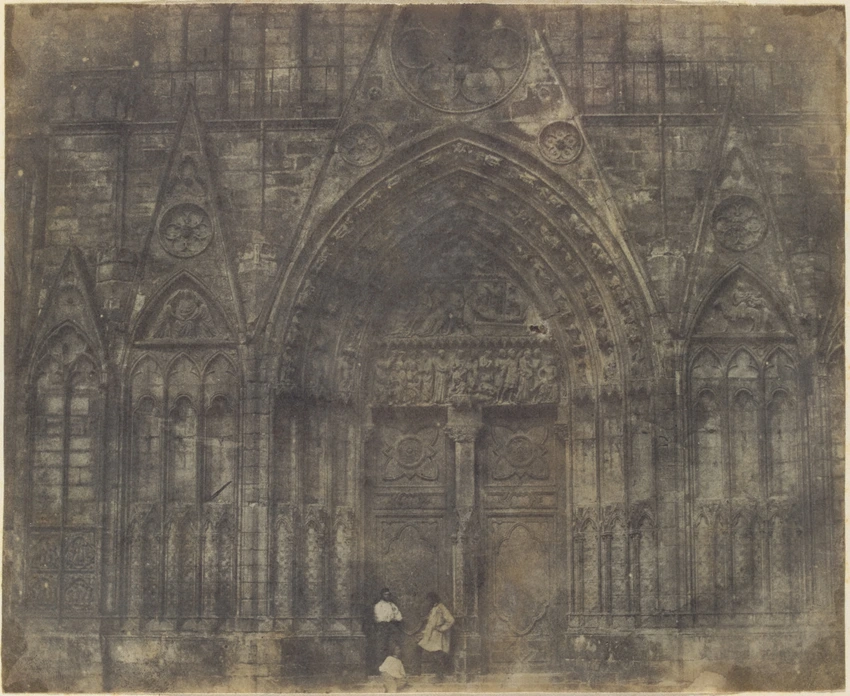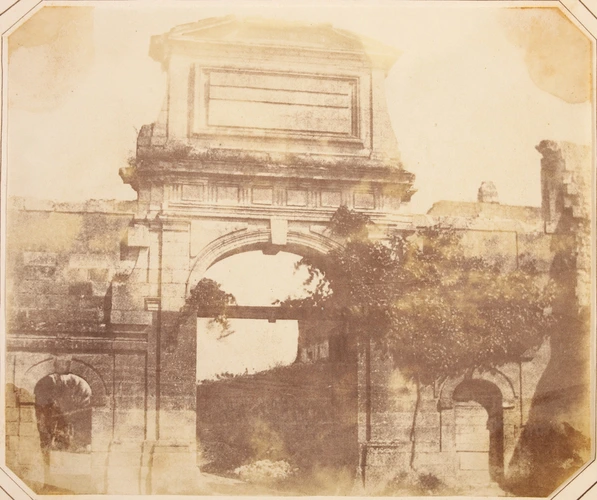Portail latéral de Notre-Dame
In parallel with the invention of the daguerreotype in France, in the late 1830s, William Fox Talbot (1800-1877) perfected a photographic process on paper and took out a patent in 1842, calling it a calotype ("beautiful image"). Faced with the commercial domination that the daguerreotype rapidly achieved, he concentrated at first on the aesthetic aspect.
Talbot went to France in the spring of 1843 and tried to find commercial agents for his process. Through his children's French governess, the English photographer made the acquaintance of the Marquis Eugène de Bassano. A Parisian entrepreneur, the son of Napoleon I's Minister for Foreign Affairs, he was passionate about Talbot's invention. On 26 June 1843, the two men signed an agreement. Bassano learnt how to produce a calotype and, in 1843, with Talbot's consent, the Marquis founded the French Calotype Society, which aimed to produce and sell paper photographs of the great monuments of France.
The photograph of the portal of Notre-Dame, taken before the cathedral was restored, was certainly produced within this context. In fact its bears the mention: Sté Cpe. The quality of this image, its depth and the smoothness of the surface brilliantly emphasise the characteristics of the calotype while recalling the aesthetic of engraving. This was why artists preferred Talbot's process to the daguerreotype, whose clarity and definition disturbed the academic world.
This view of the Side Portal of Notre-Dame is evidence of a still somewhat unknown episode in the history of photography, between France and England, relating to the invention of photography on paper.

